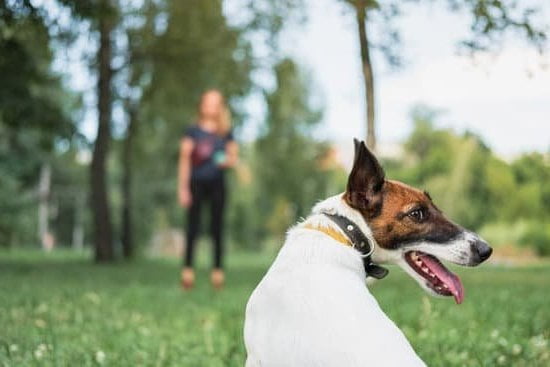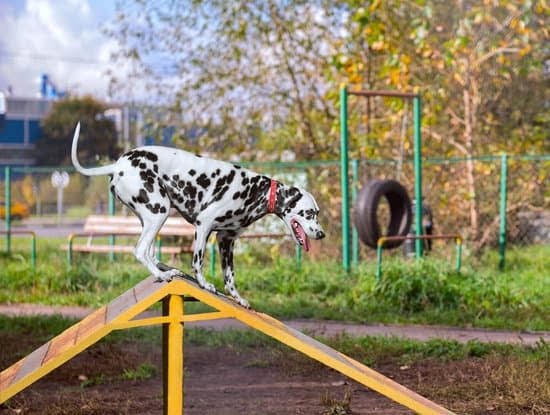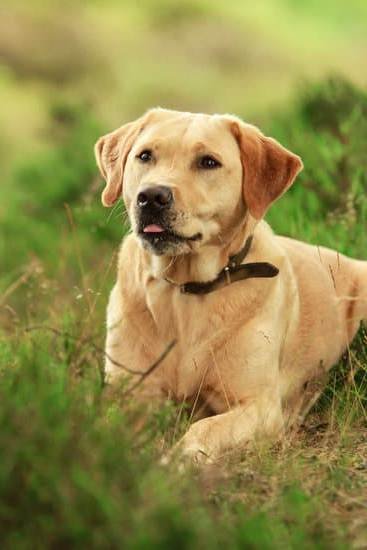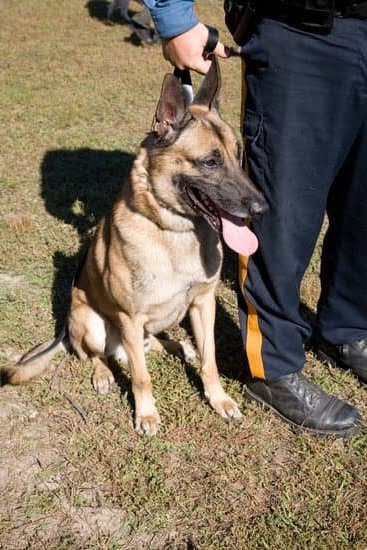Potty training a dog can be a challenging task on its own, but when you have multiple dogs, the difficulty level increases. In this article, we will discuss the various challenges of potty training when you have another dog in the picture and how to overcome them. Understanding your dogs’ behavior, setting up a routine, and using positive reinforcement techniques are all essential elements in successfully potty training multiple dogs.
When it comes to how to potty train when you have another dog, it’s important to first understand each dog’s unique habits and behavior. This will help in creating an effective plan that caters to both dogs’ needs. By establishing a consistent schedule for potty breaks and using positive reinforcement techniques, you can encourage good behavior and make the training process more manageable.
In addition to understanding your dogs’ behavior and setting up a routine, it is important to consider whether you should train your dogs separately or together. Managing accidents, supervising and monitoring your dogs’ potty habits, as well as staying patient and persistent throughout the training process are all crucial aspects of successfully potty training multiple dogs. Join us as we delve into these topics in detail and provide helpful tips for dual potty training success.
Understanding Your Dogs’ Behavior
Observing Each Dog’s Unique Habits
Every dog has their own unique habits when it comes to potty time. Some dogs may scratch at the door, while others may whine or bark to signal that they need to go outside. By understanding each dog’s individual behaviors, you can better anticipate when they need to go potty and prevent accidents in the house.
Establishing a Connection With Each Dog
Building a strong connection with each of your dogs is essential in understanding their behavior patterns. Spend quality time with each dog and observe how they react in different situations. This will help you understand their body language and cues when they need to relieve themselves.
Consistency in Observation
Consistently observing your dogs’ behavior will allow you to pinpoint the specific times when they typically need to go potty. Whether it’s after meals, playtime, or waking up from a nap, being attentive to these patterns will make it easier for you to plan potty breaks for both dogs.
By taking the time to understand your dogs’ behavior and habits, you can set yourself up for success when potty training multiple dogs at the same time. This insight will enable you to tailor your training approach based on the individual needs of each dog, ultimately leading to a successful potty training experience for everyone involved.
Setting Up a Routine
When you have multiple dogs, establishing a routine for potty breaks is essential for successful potty training. Each dog has its unique schedule and needs, so it’s important to create a consistent routine that takes into account the individual habits of each dog.
Understanding Each Dog’s Needs
Before setting up a routine, take the time to observe and understand each dog’s behavior and habits. Some dogs may need to go out more frequently than others, while some may have specific triggers that indicate when they need to go potty. By understanding each dog’s needs, you can tailor the potty break schedule to ensure that both dogs have ample opportunities to relieve themselves.
Creating a Potty Break Schedule
Once you have an understanding of each dog’s needs, it’s time to establish a schedule for potty breaks. Determine how often each dog needs to go out based on their individual habits and set specific times throughout the day for potty breaks. Consistency is key, so try to stick to the same schedule every day to help your dogs get into a routine.
Using Routine as a Training Tool
In addition to promoting good potty habits, establishing a routine can also be used as a training tool for both dogs. By consistently taking them out at the same times every day, you are reinforcing the behavior you want to see from them. Over time, they will come to expect and anticipate their potty breaks, making it easier for them to associate going outside with relieving themselves.
By creating and following a consistent routine for potty breaks, you can effectively potty train multiple dogs at once. Understanding each dog’s needs, setting up a schedule tailored to those needs, and using routine as a training tool are all key components in successfully potty training when you have another dog.
Separate or Together
When potty training with another dog, one important consideration is whether to train the dogs separately or together. This decision will depend on the individual needs and behaviors of each dog, as well as your own personal schedule and resources.
If you have two dogs with very different potty habits and needs, it may be best to train them separately. This will allow you to focus on each dog’s specific challenges and requirements, ensuring that they both receive the attention and guidance they need during the training process. Training them separately can also help prevent confusion and competition between the dogs when it comes to potty time.
On the other hand, some dogs may benefit from being trained together. If both dogs have similar potty schedules and habits, training them at the same time can be efficient and convenient. Additionally, some dogs may feel more comfortable going outside when they see their canine companion doing the same.
Ultimately, whether you choose to train your dogs separately or together, it’s important to always supervise them during potty time until they are fully trained. This will allow you to keep an eye on their behavior and progress, stepping in immediately if any accidents occur.
| Training Method | Description |
|---|---|
| Separate Training | Focusing on each dog’s specific needs and challenges during potty training. |
| Together Training | Efficiently training both dogs at the same time if they have similar habits and schedules. |
Positive Reinforcement Techniques
When it comes to potty training with another dog in the house, positive reinforcement techniques can be a game changer. Using rewards and praise to encourage good behavior is an effective way to motivate both dogs to learn and follow the potty training routine. Here are some key techniques for using positive reinforcement:
- Use treats: When one or both of your dogs successfully go potty outside, immediately reward them with a small treat. This creates a positive association with going potty in the designated area.
- Give verbal praise: In addition to treats, make sure to shower your dogs with verbal praise when they do their business outside. A cheerful “good boy/girl” can go a long way in reinforcing their good behavior.
- Offer playtime as a reward: After successful potty breaks, allow your dogs some extra playtime as a special reward. This not only reinforces their good behavior but also helps burn off excess energy, reducing the likelihood of accidents indoors.
It’s important to remember that every dog is different and may respond differently to various types of rewards. Pay attention to each dog’s preferences and use what motivates them most effectively.
In addition to using rewards and praise for good behavior, consistency is key when it comes to dual potty training. By consistently using positive reinforcement techniques, you can effectively encourage both dogs to follow the desired potty training routine. Remember that patience and persistence are essential when training multiple dogs at once, but with the right approach and techniques, success is achievable.
Managing Accidents
Dealing with accidents is an inevitable part of potty training, especially when you have another dog in the mix. It’s important to understand that setbacks and mishaps are a normal part of the process, and staying patient and persistent is key. When potty training with another dog, accidents may occur more frequently due to the influence of the other dog’s behavior.
One way to manage accidents is to clean up any messes promptly and thoroughly. Dogs have a strong sense of smell, and if they detect even a faint scent of their own waste, they may be more likely to eliminate in the same spot again. Using an enzymatic cleaner designed specifically for pet messes can help eliminate odors and discourage repeat accidents.
Additionally, it’s important not to punish your dogs for accidents during potty training. Punishment can create fear or anxiety around elimination, making the training process even more difficult. Instead, focus on reinforcing positive behavior by rewarding successful trips outside. This will help your dogs understand where they should be going potty and encourage them to continue that behavior.
Supervision and Monitoring
Potty training one dog can be challenging enough, but when you have another dog in the mix, it can seem like a daunting task. However, with the right approach and mindset, it is possible to successfully potty train multiple dogs at the same time. One of the key elements to achieving this is through effective supervision and monitoring of both dogs’ potty habits.
To effectively supervise and monitor both dogs during the potty training process, consider implementing the following strategies:
- Establish a designated potty area for each dog
- Keep a close eye on both dogs, especially during times when they typically need to go potty (e.g. first thing in the morning, after meals, before bedtime)
- Use baby gates or crates to limit access to certain areas of the house where accidents may occur
Furthermore, it’s important to keep track of their progress by documenting when and where they have successful potty breaks and any accidents that may happen. This will help you identify any patterns or behaviors that may need to be addressed during training. By closely supervising and monitoring both dogs’ potty habits, you can proactively address any issues or setbacks that may arise.
In addition, consider using tools such as pee pads or artificial grass patches inside your home as an option for those times when you cannot directly supervise both dogs. This can help minimize accidents while still giving them a designated place to go potty indoors. By consistently supervising and monitoring each dog’s potty habits, you can more effectively guide them towards successful potty training outcomes. Remember that patience and persistence are key in this process.
Consistency Is Key
When it comes to potty training two dogs at the same time, consistency is absolutely crucial. It’s important to stay patient and persistent throughout the entire process, as every dog learns at their own pace. Consistency means sticking to a routine, using the same commands, and enforcing the same rules for both dogs. This will help them understand what is expected of them and make the training process smoother.
One key aspect of consistency in potty training multiple dogs is to ensure that everyone in the household is on the same page. From family members to any dog walkers or pet sitters, it’s essential that everyone follows the same routine, uses the same commands, and provides consistent reinforcement. This will prevent confusion for the dogs and create a unified approach to their potty training.
In addition to staying consistent with your approach, it’s also important to remain patient with your dogs. Potty training can be a frustrating process, especially when dealing with multiple dogs. There may be accidents along the way, but it’s essential not to get discouraged. Keep a positive attitude and continue offering encouragement and rewards for good behavior. With time, patience, and persistence, both of your dogs will eventually grasp the concept of potty training.
Conclusion
In conclusion, potty training with another dog can be a challenging but rewarding experience. Understanding each dog’s behavior and habits is crucial in creating a successful potty training routine. By setting up a consistent schedule for potty breaks, using positive reinforcement techniques, and being patient and persistent, you can effectively train both dogs to eliminate in the appropriate place.
It’s important to remember that accidents will happen, and it’s essential to manage setbacks and mishaps with patience and understanding. Whether you choose to train your dogs separately or together, supervision and monitoring are key factors in ensuring that both dogs are following the established routine.
As you celebrate the success of potty training with another dog, remember that consistency is the key to long-term success. Stay consistent in your approach, offer plenty of praise and rewards for good behavior, and continue monitoring your dogs’ potty habits even after they have been successfully trained. With time, dedication, and patience, you can achieve dual potty training success while maintaining a harmonious environment for both your furry friends.
Frequently Asked Questions
How Do You Potty Train a Puppy When You Have Another Dog?
Potty training a puppy when you already have another dog can be challenging, but consistency is key. Take the new puppy out frequently and praise them when they potty outside. Use your older dog as a role model for the puppy.
Is It Easier to Train a Puppy if You Already Have a Dog?
Training a puppy when you already have a dog can actually make it easier in some ways. The older dog can help teach the new puppy appropriate behavior and social cues, making the training process smoother.
How Do You Train a New Dog With Another Dog in the House?
When training a new dog with another dog in the house, it’s important to introduce them properly and supervise their interactions. Use positive reinforcement for good behavior and make sure each dog gets individual attention and training sessions to avoid competition.

Welcome to the blog! I am a professional dog trainer and have been working with dogs for many years. In this blog, I will be discussing various topics related to dog training, including tips, tricks, and advice. I hope you find this information helpful and informative. Thanks for reading!





